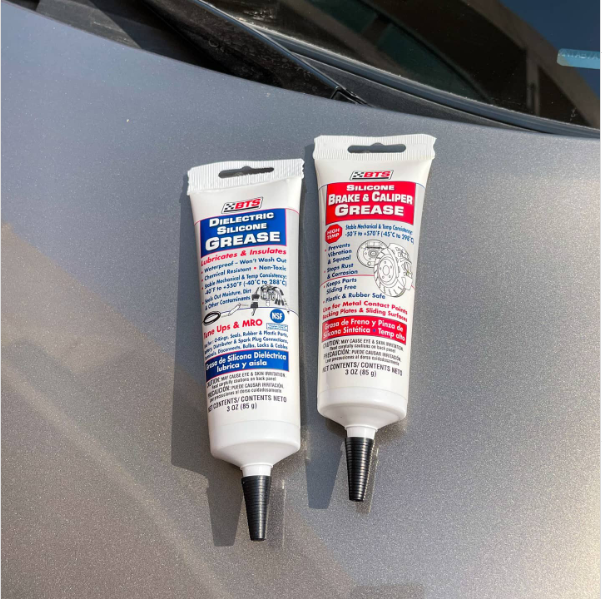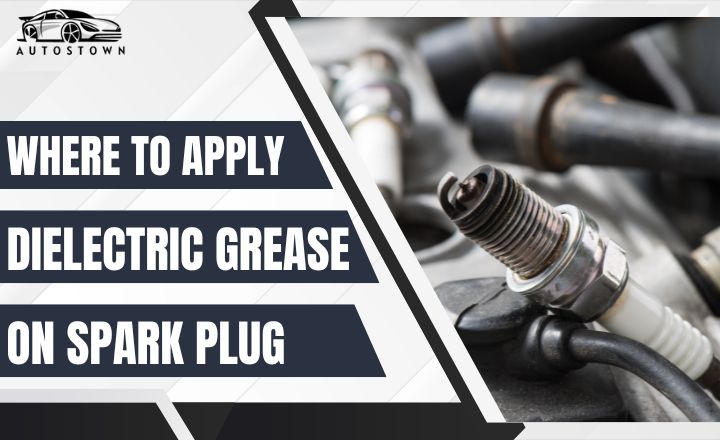If you want the best effects, where exactly should you use this miracle substance? A crucial place to pay attention to is the spark plug boot. Your spark plug’s lifespan can be increased by applying a thin coating of dielectric grease to the interior of the boot, which helps keep moisture and other impurities out.
Where to apply dielectric grease on spark plug? The area surrounding the spark plug wire terminal ends is another frequently disregarded location for the application of dielectric grease. You can improve conductivity and build a barrier against corrosion in these regions, which will improve ignition performance, by carefully applying dielectric grease. Furthermore, remember to dab the porcelain insulator at the plug’s base with a tiny bit of dielectric grease to help avoid seizing and facilitate removal in the future.
What is a Dielectric Grease

Dielectric grease is a type of lubricant that is specifically designed to stop electrical current from flowing between two conductors. It fills in the spaces and acts as an insulator, keeping impurities and moisture from producing electrical leaks or short circuits. Usually composed of silicone-based components, this translucent polymer is resistant to exposure to extreme temperatures, chemicals, and environmental conditions. In automotive applications, dielectric grease is frequently used to prevent corrosion and moisture infiltration on ignition components, spark plug boots, battery terminals, and wiring connections.
Where to Apply Dielectric Grease On Spark Plug
While dielectric grease is essential for preserving spark plug performance, its application location might also be critical. The boot and terminal portions of spark plugs require special attention when applying dielectric grease. By doing so, the spark plug and ignition coil are kept securely connected and a barrier against moisture and corrosion is created.
Apply the dielectric to the interior of the boot where it attaches to the ceramic component of the spark plug, It is an important spot to focus on. This crucial junction can be kept dry by using a tiny bit of dielectric grease, which will ultimately increase the spark plug’s lifespan.
Improved conductivity and increased resistance to moisture can be achieved by putting dielectric grease around the terminal ends.
It’s important to remember that using dielectric grease excessively can cause problems with good electrical connections. You may maximize the advantages of dielectric grease without sacrificing performance by selectively concentrating on particular places, such as boots and terminals.
When to Use Dielectric Grease on Spark Plug
- Under some circumstances, dielectric grease might be a useful supplement to your spark plug maintenance regimen. Working with older or high-mileage engines is one scenario where dielectric grease is frequently helpful.
- Under these circumstances, the rubber boots covering the spark plug connectors could harden and shatter more easily.
- By using dielectric grease, you can lessen the chance that moisture may enter these gaps and result in electrical arcing or misfires.
- In damp areas like coastal regions or rainy climates, where you operate vehicles frequently, dielectric grease can serve as a barrier against water entry.
- By adding a layer of defense, you can lessen the chance of corrosion and preserve the integrity of your spark plug connections.
- It is crucial to remember that excessive usage of dielectric grease or applying it directly to the spark plugs’ metal-to-metal contact sites might impede conductivity and result in subpar engine performance.
How to Apply Dielectric Grease On Spark Plug
1. Clean the Spark Plug:
Make sure the spark plug is clean and clear of any dirt or corrosion before using dielectric grease. To clean the spark plug threads and terminal of any dirt or grime, use a wire brush or compressed air.
2. Apply a Thin Layer:
After cleaning the spark plug, coat the interior of the spark plug boot with a thin layer of dielectric grease. This will assist in preventing moisture from penetrating the connection and resulting in corrosion, which may cause the engine to run poorly.
3. Avoid Excessive Application:
It’s crucial to avoid over-applying dielectric grease since this could negate its protective qualities by drawing in additional dirt and debris. Your spark plug connections can be effectively protected with just a thin, uniform coating.
4. Reassemble Carefully:
Ensure that the spark plug boot fits tightly but not forcefully onto the spark plug terminal after reassembling it after using the dielectric grease. In addition to preserving the grease’s protective qualities, this will aid in maintaining a strong electrical connection.
5. Regular Maintenance:
Keep in mind that using dielectric grease is a continuous solution. Maintaining the best possible performance and protection for your vehicle’s spark plugs requires routine inspection and reapplication as needed.
How to Use Dielectric Grease On Spark Plug Wires
Applying dielectric grease to spark plug wires is a simple but effective maintenance tip that can improve the ignition system in your car. Applying this straightforward yet efficient approach can improve conductivity, guard against environmental damage, and eventually improve engine performance. It just takes a few minutes to complete.
Conclusion
It is essential to understand when and where to apply dielectric grease to spark plugs to preserve engine performance and avoid future problems. You may successfully stop moisture and corrosion from harming the electrical connection by putting grease on the inside of the spark plug boot and the terminal ends. Using dielectric grease can also guarantee consistent ignition and help your spark plugs last longer.
For optimal results, it’s critical to use a high-quality dielectric grease and adhere to manufacturer guidelines. Recall that applying dielectric grease correctly can have a big impact on the lifespan and general performance of your car. Today, take care of your spark plugs by putting the appropriate amount of dielectric grease on them!
FAQs
1: Where should I apply dielectric grease on a spark plug?
Apply a thin layer of dielectric grease to the inside of the spark plug boot and around the terminal of the spark plug.
2. Will using dielectric grease improve my spark plug’s performance?
Yes, dielectric grease helps improve electrical conductivity and prevents moisture from affecting the spark plug’s performance.
3. How does dielectric grease extend the lifespan of a spark plug?
By protecting against moisture and corrosion, dielectric grease helps prevent damage to the spark plug, thereby extending its lifespan.
4. Is dielectric grease necessary for all types of spark plugs?
While not strictly necessary for all types of spark plugs, using dielectric grease can help prolong the life and effectiveness of the spark plug connections.
5. Is it necessary to clean the spark plug before applying dielectric grease?
It is recommended to clean any dirt or debris from the spark plug before applying dielectric grease for better adhesion and effectiveness.
Related:- How to Splice Spark Plug Wire – 5 Methods
More Related:- How To Test A Spark Plug With A Battery?

